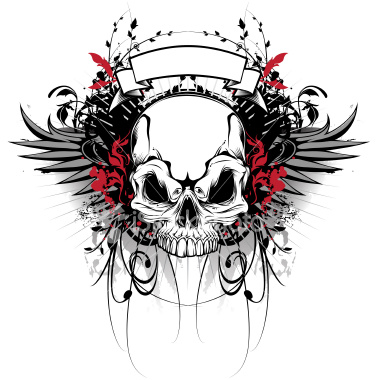The lab is a temple,
each cabinet a tomb,
for therein are skeletons
all about the room.
Clear tubs are their caskets,
their marker'd "names" a string
of numbers and letters and location,
ready for identifying.
Out comes the skull from the box,
which once had eyes to see,
the very prison of the human soul,
of what makes you, you, and me, me.
In all the 200 cc's it can hold,
there once were thoughts and dreams.
There was love and hate and drama and madness,
perhaps even genius bursting its seams.
But this skull doesn't have a face,
and its owner remains unknown,
as the grave was found shallow and hastily dug,
into which the body was thrown.
So there goes the skull, onto the seat,
and markers grace its curves,
and with a little bit of digital magic,
a face you may slowly observe.
it is lumpy and strange, this visage,
cast in polygons and data,
a face from beyond the grave,
a possible persona non grata.
Human eyes look back at you,
and despite their lack of life,
you feel for them and their last struggle,
ended by gun or hammer or knife.
So you click to "save" this human face,
and into a file it flies,
and this you send to the database,
to another fresh pair of eyes.
It is this rendition the officer sees,
which they match with great care,
to find the owner who wore this face,
unfortunate enough to meet Death's stare.
And then sometime later, they will find
a photograph so close, so near,
and with a scrambling, beating heart,
will see that they did disappear.
An investigation will there follow,
and the dots will begin to connect,
as the rest of the skeleton is thoroughly prodded,
with of course the utmost respect.
They will find they'd broken an arm in soccer,
that they were hardly more than twenty-eight,
from a break in the humerus and the ulna,
from fully-grown epiphyseal plates.
A spur on the foot, a sprain in the ankle,
the wear-and-tear on the head and feet,
will the story of a young man
who was a fit and avid athlete.
The nick on the fifth costal vertebrae,
will match with the edge of a blade,
one that penetrated his back,
the weapon with which he was slayed.
And from here, the anthropologist is done,
the bones go back in the tub,
for the investigators must now take over,
to a suspicious and skeevy pub.
At last we can pull out a marker,
and pen the man's name on the label,
rearrange all of his earthly remains,
and get them off the exam table.
For the bones have spoken their story,
even after years lying in the murk,
and for the anthropologist who studied him,
well - just all in a day's work.






